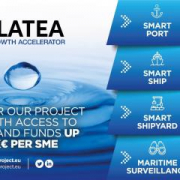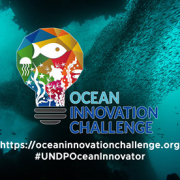Maritime ports: studies, works or mixed | Deadline: 30 January 2024
Deadline: 30 January 2024
Budget: € 2.800.000.000
Countries: France, Italy, Malta, Portugal, Spain
More information: Funding and tender opportunities portal by the European Commission
Objective
The objective is to develop transport infrastructure projects in maritime ports on the Core Network of the TEN-T.
Scope
Studies and / or works on core maritime ports, related to:
• port access aiming at providing safe maritime access in the form of breakwaters, access channels, fairways, locks and navigational aids (e.g. radar, buoys);
• basic port infrastructure, which are not covered under section 6.2.2 ‘Actions related to sustainable and multimodal mobility’ of the Work Programme, and with a priority on:
– development of zero or low-emission multimodal solutions;
– development of ports´ capacities and facilities in relation with the transportation activities of the offshore wind farms. The involvement of the maritime port in the transportation activities of the offshore wind farms and the need for the basic port infrastructure for those activities should be demonstrated in the proposal; or,
– improving connectivity of remote, insular or outermost regions or of Member States with no land border with another Member State.
Such basic port infrastructure may be in the form of turning basins, quay walls, berths, jetties, backfills, land reclamation, which improve the efficiency of the maritime ports and their integration within the TEN-T network. The backfills and land reclamation could be supported as interventions to create space for construction of other basic port infrastructure, e.g. a berth, quay walls, etc, but should not lead to significant added capacity (i.e. increased surface of or creation of new terminals, logistics/cargo handling areas, etc.).
• shore-side electricity supply (including an upgrade of electrical grid within the port if it is needed for the shore-side electricity supply);
• port reception facilities for oil and other waste (including residues from exhaust gas cleaning systems) to meet environmental requirements;
• ensuring year-round navigability by means of capital dredging and icebreaking facilities. The capital dredging will be supported only as an intervention to remove bottlenecks for the EU short sea shipping;
• providing or improving inland waterways/road/rail access and connections within maritime ports. The rail access could cover rail infrastructure e.g., new rail tracks, upgrade of existing rail tracks, adaptation for 740 meter long trains and connections within the maritime ports.
Works projects may include on-site renewable energy generation (synergetic element in accordance with Section 10.6 of the Work Programme), such as photovoltaic power plants, wind turbines etc. that is primarily used for example for the shore-side electricity supply, for the need of the basic port infrastructure and for diverse port operations. Such synergetic elements must improve the socioeconomic, climate or environmental benefits of the project and may not exceed 20% of the total eligible costs of the project.



